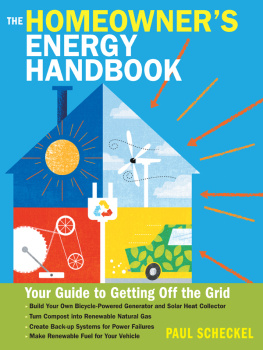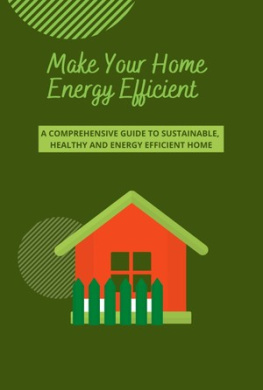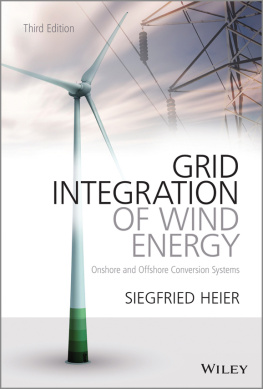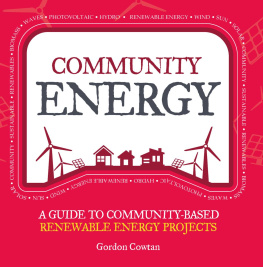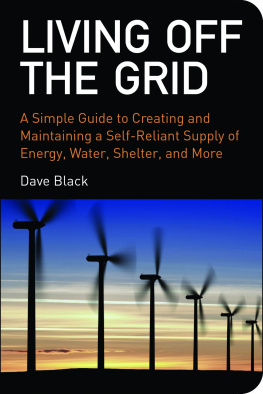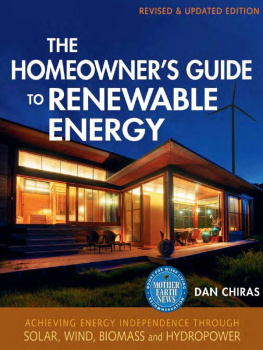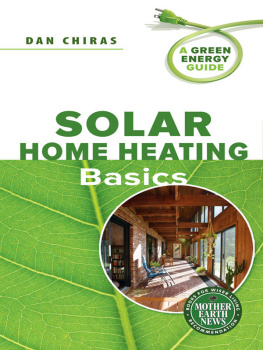
THE HOMEOWNERS ENERGY HANDBOOK
The mission of Storey Publishing is to serve our customers by publishing practical information that encourages personal independence in harmony with the environment.
EDITED BY Deborah Burns and Nancy D. Wood
ART DIRECTION AND BOOK DESIGN BY Carolyn Eckert
TEXT PRODUCTION BY Gary Rosenberg and Theresa Wiscovitch
COVER ILLUSTRATION BY Michael Austin/Jing and Mike Company
INTERIOR ILLUSTRATIONS BY James Provost, except for Michael Austin/Jing and Mike Company, 3, 14, and 104; and Ilona Sherratt, 127
ILLUSTRATION EDITING BY Ilona Sherratt
PHOTOGRAPHS AND GRAPHICS COURTESY OF: Paul Scheckel, 27; National Fenestration Research Council, 85; PowerWise Systems, Inc., 99; www.energystar.gov, 73 top left; Web Energy Logger, 103; U.S. Department of Energy, 127; Kestrel Renewable Energy, kestrelwind.co.za, 141; UN Development Program, 262
INDEXED BY Nancy D. Wood
TECHNICAL EDIT BY Philip Schmidt, with contributions from Hilton Dier III, Bret Hamilton, David House, Chris Kaiser, and Ian Woofenden
2013 by Paul Scheckel
All rights reserved. No part of this book may be reproduced without written permission from the publisher, except by a reviewer who may quote brief passages or reproduce illustrations in a review with appropriate credits; nor may any part of this book be reproduced, stored in a retrieval system, or transmitted in any form or by any means electronic, mechanical, photocopying, recording, or other without written permission from the publisher.
The information in this book is true and complete to the best of our knowledge. All recommendations are made without guarantee on the part of the author or Storey Publishing. The author and publisher disclaim any liability in connection with the use of this information.
Storey books are available for special premium and promotional uses and for customized editions. For further information, please call 1-800-793-9396.
Storey Publishing
210 MASS MoCA Way
North Adams, MA 01247
www.storey.com
Printed in the United States by Courier
10 9 8 7 6 5 4 3 2 1
Library of Congress Cataloging-in-Publication Data
Scheckel, Paul.
The homeowners energy handbook / by Paul Scheckel.
pages cm
Includes index.
ISBN 978-1-61212-016-4 (pbk. : alk. paper)
ISBN 978-1-60342-847-7 (e-book)
1. Renewable energy sourcesHandbooks, manuals, etc.
2. DwellingsInsulationHandbooks, manuals, etc.
3. Architecture and energy conservationHandbooks, manuals, etc. I. Title.
TJ808.S328 2013
696dc23
2012032592
You alone are responsible for how you use the information in this book, and you must assume any and all liability for damage to people or equipment. It is your responsibility to determine the suitability of any project, parts, assembly, and any and all results or outcomes, to be used for any particular purpose whether presented in this book or not. It is up to you to use tools and equipment properly and to take proper precautions with chemicals, mechanical equipment, electrical service, materials, and procedures. You alone are responsible for injuries to yourself or others or for damage to equipment or property.

For Silas,
who reminds me every day of the boundless renewable energy inside us all.
Acknowledgments
THIS BOOK IS not, and could not be, anything close to what I imagined at the conceptual stage. It is much more and much better. For this, I owe a debt of gratitude to all those who offered their time, experience, expertise, encouragement, and support for this project.
It has been nothing short of a pleasure to work with the dedicated professionals at Storey Publishing. I specifically want to thank Deborah Burns for her enthusiasm, followed by much patience with my seemingly endless delays; Nancy Wood, whose organizational and editing skills kept me on track, and who continued to be patient (and even encouraging) with even more delays; Phillip Schmidt for his incredibly thorough technical review and ability to draw clarity from foggy bottom; and James Provost for his excellent illustrations.
There are many more to thank for their various contributions, including:
You, the reader, for taking the time to understand and explore renewable energy and energy efficiency. Without individual motivation and action, nothing will be as you imagine it could be.
My family, for their extended patience during the frenzy of endless deadlines and with my obsession with getting the hands-on projects just right. The porch, garage, yard, garden, and even the closets are littered with the remnants of prototypes.
The following professionals provided advice, guidance, technical review, and personal contributions: Ian Woofenden, Home Power magazine; William David House, Vahid Biogas; Bret Hamilton, Shelter Analytics; Hilton Dier, Solar Gain; Gordon Grunder; John Dunham; Jim ORiordan, ORiordan Plumbing and Heating; Tina Webber, Swing Green; Paul Gipe, wind energy expert and advocate; Home Power magazine, for all things renewable; Tracy Vosloo, Kestrel Wind Turbines; Chris Kaiser and Powell Smith, Mapawatt Blog; Josh Van Houten for help with advanced chemistry; Paul Harris, the University of Adelaide; Lori Barg, Community Hydro; Chris Pratt, Open Sash; United Nations Development Programme; Aprovecho Research Center; The Journey to Forever Project; Solar Energy International; Cornell University, Waste Management Institute; Spenton LLC, wood-gas camp stoves; Powerhouse Dynamics, home energy monitors; Blue Line Innovations, home energy monitors; PowerWise energy monitoring dashboards; Jock Gill, biomass expert and advocate; All Power Labs, wood gasifiers; NASAs Langley Research Center.
Contents
Introduction
A S I WRITE this, I have just lit the fire on my first batch of homemade biogas. Food scraps and pig poop have been successfully transformed into a gas, similar to propane or natural gas, that we can cook with. Biogas is the combustible result of the decay that happens in nature just as easily as the sun shines or the wind blows. The challenges in harnessing these energetic gifts from nature lie in collecting, controlling, storing, and often transforming the primary energy resource into a form that can be used to meet a particular need. Much of this book is all about exploring the options for meeting your energy needs through natural resources, along with the processes involved in focusing their potential toward some particular need.
For years Ive been fascinated with the idea of making biogas, but I was intimidated by what appeared to be complex and exacting science in the recipe requirements for optimum gas production. But experience is the best teacher and, after all, this simple process of biomass decay happens all by itself in nature. So how hard could it be to create the environment for gas to not only happen, but to actually be produced? I found a 55-gallon airtight barrel in the inventory (as I like to call it; my wife calls it something else) behind the garage. I dumped in a 5-gallon bucket of compostable food scraps and a smaller bucket of poop from our two pigs, along with a pile of grass clippings. Then I filled it halfway up with water and waited. One week later, combustible gas was bubbling out of the barrel no exact recipe or scientific calculations required.
The Road to Self-Empowerment
Next page
